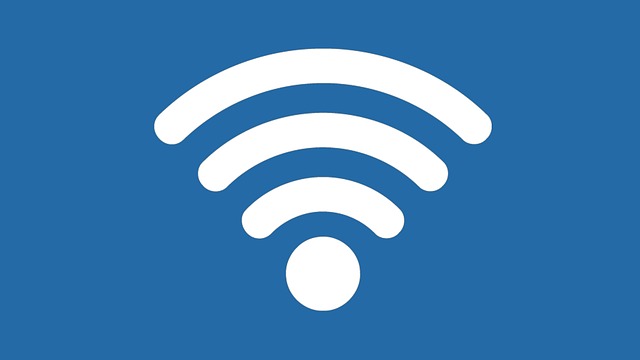Customers are experiencing issues with the “WiFi doesn’t have a valid IP configuration” warning code. When there is no internet access, the alarm is raised as a result of connection strategist checks.
Problems might arise for a variety of reasons, including the need for WLAN components to be in the forefront or third-party interference. In this post, we’ll show you how to get around the warning message that appeared above, so all you have to do is read on and follow our recommendations.

As it turns out, reliable internet access is a need in today’s world. Several things influence your system’s ability to connect to the internet. In the event that your WiFi network does not have an IP address, you will not be able to connect to the internet.
Let’s take a look at some of the possible causes of the error message you’re seeing before we get into the various solutions you might use to get around it.
Read Also:
Understanding “WiFi Doesn’t Have a Valid IP Configuration” Error
When a device attempts to connect to a WiFi network, it requires a valid IP address to communicate with other devices and access the internet. The “WiFi Doesn’t Have a Valid IP Configuration” error indicates that the device was unable to obtain a valid IP address from the router or DHCP server.
Without a valid IP configuration, the device cannot establish a connection to the network, resulting in limited or no connectivity.
Causes of “WiFi Doesn’t Have a Valid IP Configuration” Error
Several factors can contribute to the occurrence of “WiFi Doesn’t Have a Valid IP Configuration” error:
- Incorrect Network Settings: Incorrect network settings, such as an invalid IP address or subnet mask configuration, can prevent the device from obtaining a valid IP configuration.
- DHCP Server Issues: Problems with the Dynamic Host Configuration Protocol (DHCP) server, such as misconfiguration or network conflicts, can result in the inability to obtain a valid IP address.
- IP Address Conflict: Another device on the network may already be using the IP address assigned to the device, causing an IP address conflict and preventing the device from obtaining a valid IP configuration.
- Router or Access Point Configuration: Router or access point configuration issues, such as outdated firmware, incorrect settings, or wireless interference, can affect the device’s ability to obtain a valid IP configuration.
- Network Adapter Driver Issues: Outdated, corrupt, or incompatible network adapter drivers can interfere with the device’s ability to communicate with the router and obtain a valid IP configuration.
How To Troubleshoot WiFi Doesn’t Have a Valid IP Configuration
1. Perform a Factory Reset
Using a fresh start assures that no apps interfere with each other and that no third-party conflicts cause system problems. The Wi-Fi connection can be established once you disable non-Microsoft services and programmes.
To perform a clean boot on a Windows 10 computer, follow these steps:
Step 1: Press the Wins + R keys on your keyboard. When this is done, the Run application will be launched.
Step 2: After you’ve typed “msconfig” without any quotes, press the Enter key on your keyboard. As a result, the System Configuration window will open.
Step 3: Go to the Services menu and select “Services.” Tasked with ensuring that the “Hide all Microsoft services” option is selected. This is the sole lens through which you’ll see outside help.
Step 4: In order to disable all third-party software on your computer for the time being, perform Step 4 (Stop all) after concealing all network services.
Step 5: Click the Apply tab to save your changes and then restart your device. When you reboot, you’ll be in a state where only Microsoft software is running.
Step 6: Verify that you have no issues connecting to the Wi-Fi network. Identify which of your third-party programmes is interfering with your networks if this is the case and shut it down right now.
2. Updated Drivers
Your driver software must be updated on a regular basis. Having out-of-date network drivers can cause more problems than you might think. To upgrade the firmware on your network devices, we’ll utilise the included Device Manager.
Step 1: Press the Wins + X keys on your keyboard to open the context menu and select Device Manager from it.
Step 2: Add new Network Adapters to the category list. A simple double-click on the adapter will open it.
Step 3: Click on the Update Driver button in the Driver panel to perform a driver upgrade.This is the final step in the process. Either manually or automatically, Windows 10 will begin searching for a new driver file on your computer if you don’t specify otherwise.
Allow the driver installation to complete before moving on to the next step. After you’ve installed the driver, restart your computer to test if Wi-Fi is working properly.
3. Drivers of Rollbacks
In some cases, reverting to an older version of the wireless device driver may help alleviate the problem of erroneous IP setting. To do so, type the command:
In the Device Manager, double-click the wireless device. Continue with the on-screen instructions by clicking the Roll Back Driver box in Drivers and following the on-screen prompts.
Drivers should be uninstalled. The issue “WiFi Doesn’t Have a Valid IP Configuration” may be caused by a misconfigured network driver. You can try deleting and then reinstalling the wifi adapter driver on Windows 10.
Delete your network adapter driver in Device Manager. Search for “device management” and select “Device Manager” from the results. Expand “Network adapters” in Device Manager and right-click on the wireless device you’ve just discovered. Select “Uninstall” from the drop-down menu that appears.
Lastly, you must confirm the deletion. You should choose “OK.” Remove the device’s driver software if you see this option. Restarting your computer is necessary for the adjustments you’ve made to take effect. Restarting your computer may have fixed the issue.
4. Uninstall or Disable Antivirus Software
Antivirus software has a track record of interfering with internet connections and preventing programmes and services from functioning properly on computers. You can determine if your antivirus is to blame for the “Wi-Fi doesn’t have a suitable IP setup” issue by temporarily disabling it.
This method is not recommended because utilising a computer without any security measures is extremely risky. Proceed only if you are aware of the risks and have a copy of your system’s backup in case anything goes wrong.
Step 1: Right-click an empty area on your taskbar and select Task Manager from the context menu that appears.
Step 2: Check the “Mode information” button if the Task Manager started in compact mode for more information. Navigate to the Start-up tab using the header menu at the top of the screen.
Step 3: Find and select your antivirus software by clicking on it once in the list provided.The Disable button is located at the bottom-right area of the window.
Restart your computer and rejoin to your wireless network in step six.
5. Re-enable the Windows Firewall
It’s conceivable that a firewall setup problem is preventing your IP address from being validated. Windows Firewall can be reset to default settings in a matter of seconds.
Step 1: Using the magnifying glass icon in your taskbar, you may open the search bar and begin searching. To bring it up, use Windows + S on your keyboard.
Step 2: Type firewall into the search box and click Check firewall status in the outcomes. In the drop-down box, select Restore defaults. Before you begin, be sure you have read all of the warnings and instructions. Click Restore defaults to return your firewall settings to their default state.
Yes should be selected in step 5. Once the settings have been reset, reconnect to your Wi-Fi network to see if it works as planned.
6. IP Address Release and Renewal
In order to fix the “WiFi doesn’t have a valid IP configuration” issue, you may want to use the command prompt to follow instructions.
Step 1: To get started, type “command prompt” into the search bar and right-click on “Command Prompt.” Select “Execute As Administrator” from the drop-down menu to launch the application as an administrator.
Step 2: In the Cmd Prompt box, type “ipconfig /release” and press Enter on the keypad. There must be a gap between “ipconfig” and “/release” in the function.
Step 3: Using “ipconfig /renew” instead of “ipconfig /renew” is step 4. This code must also have a space after “ipcongif.” Please enter the correct code.
Once you’ve finished entering the instructions, type “exit” and press Enter to exit the command prompt. To see if this succeeded, restart your computer.
7. Uninstall and Reinstall TCP/IP Stacks
If restarting your TCP/IP wasn’t enough, you may want to refresh your DNS. As a result, the Cmd Prompt and, in some situations, administrator credentials are required.
Step 1: Press the Wins + R keys on your keyboard. When this is done, the Run application will be launched.
Step 2: After typing “cmd” without quotation marks, press the Enter key on your keyboard. As a result, the long-standing Cmd Prompt software will be re-launched.
Step 3: Enter the following one at a time and press Enter after each segment to run the instructions:
/release ipconfig /
to renew your internet connection, use the following commands:
It is important to keep the Cmd Prompt open that you first opened. Write and carry out the instructions mentioned below in the order they appear on the list:
NetScroll int ip set DNS
netsh winsock re-establish
If everything went well, you can exit the command line prompt and restart your computer at this point. Check to see if the issue with “Wi-Fi doesn’t have a correct IP setup” is still present and in effect.
8. The IP Address Has To Be Typed In Manually
Step 1: Using the Wins + X key combination, obtain the network connections in the panel.
Step 2: Click the Change adapter options button under Advanced network setups. A message should appear in a pop-up window on your desktop.
Step 3: Right-click on your Wi-Fi adapter and select Properties from the drop-down menu. User Account Control (UAC) prompts you to grant administrator access to the window.
Step 4: Double-click on TCP/IP Version 4 (TCP/IPv4). Make sure that “Use a list of these IP addresses” is selected instead of “Use the following IP addresses,” and then fill in the following numbers:
In this case, the IP address: 192.168.1.#
255.255.0 is the subnet mask, while 192.168.1.1 is the default gateway.
Step 5: Next, select “Use the following DNS server addresses” from the drop-down menu and type in the following numbers:
8.8.8.8 is my preferred DNS server.
8.8.4.4 is a different DNS server.
Step 6: Verify that the option to Confirm changes when leaving is checked, then press the OK symbol.
It is possible to utilise this method to see if your Wi-Fi issues are fixed.
9. Infectious Disease Screening
Malware or a virus on your computer could possibly be to blame for this issue. A virus scan using the built-in Windows Security software should fix the issue. Examination options in Windows Security include ‘Full Check,’ which is recommended if you want a thorough scan of your computer.
Virus scans can be started by searching for “Windows Security” in the “Search” menu and then selecting the appropriate search result to open the software.
Step 1: In Windows Security, choose ‘Virus and threat prevention.’ Once you’ve selected “Quick scan,” click on “Scan choices” to see all of the different sorts of scans that are available.
Step 2: At the bottom of the page, select ‘Full Scan’ and then click ‘Scan Now’ to begin.The scan will begin shortly and take some time to complete.
Step 3: Working on the system is possible while the scan is in progress. Once the scan is complete, you’ll be alerted whether or not a virus or trojan was discovered and what steps were done as a result.
10. SSID and Password Reset
Changing your router’s SSID and password is another way to fix the “Wi-Fi doesn’t have a valid IP setup” issue.
Step 1: In Chrome, Firefox, or Edge, open a new browser tab and type the gateway IP address. The router’s username and password must be entered in this step.
Step 2: Sift through the options on the router to change the SSID and passwords. After that, save your changes. In order to connect to the router, you’ll need to modify your PC’s SSID and password.
The networks on any linked devices should also be updated.
11. Changing The Mode of The Internet Connection
In addition to altering your PC’s network settings, you should also experiment with the router’s settings. Following that would be changing the Wi-Fi security from WAP2/WAP3 to WAP and then resetting the router’s SSID and password.
There is a chance that Windows will construct a new network and avoid the issue as a result. Rebooting the router is the final step. Before you do anything else, be sure you know how to replace the router.
Windows 10 includes built-in troubleshooters to assist you in identifying and resolving issues with the OS. It’s possible that the Network Troubleshooter software can help you if you’re experiencing trouble connecting to the internet.
Step 1: First, go to your Start menu by pressing and holding down your Windows key. To open the Settings menu, hit Windows + I.
Step 2: From the drop-down menu, select Network & Internet. The vast majority of your network’s configuration options may be found in this section.
Step 3: The third and final step is to keep your eye on the Status tab. Select Network Troubleshooter from the drop-down option at the bottom of the page.
Wait for the troubleshooter to identify and fix your computer’s issues. Please follow the on-screen directions provided by the troubleshooter in order to fix any issues or problems.
Some problems may be undetected by the troubleshooter. Most troubleshooters only search for a limited number of errors, and if yours isn’t one of them, they can’t help you.
Read Also:
Conclusion
As a result of the aforementioned adjustments, you should be able to access your favourite websites once more. In addition, if you don’t know the precise problem and can identify the remedy in the article, applying the repairs in the order they are presented will help you quickly resolve the error.


